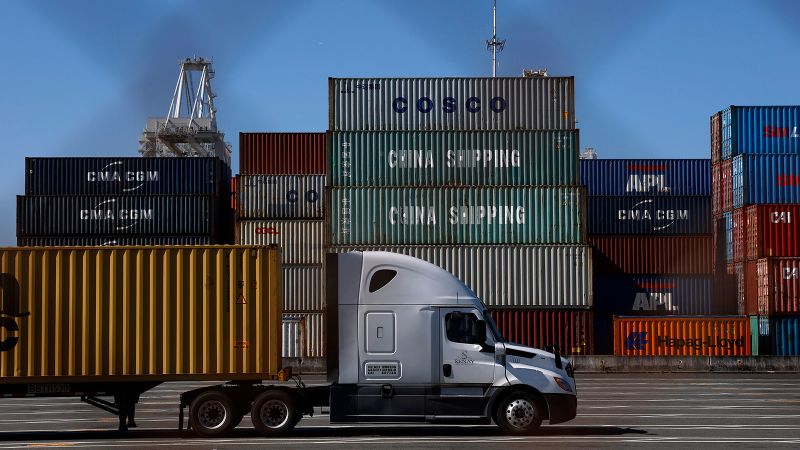As U.S. ports contend with a continuing decline in imports reminiscent of pandemic-era levels, recent developments regarding tariffs have provoked both hope and confusion among port officials and retailers.
On Wednesday, news that a court had suspended many of former President Donald Trump’s tariffs lifted spirits, suggesting a potential easing of the trade burdens that have hampered import flows. However, this optimism was short-lived; a federal appeals court quickly intervened on Thursday, reinstating the tariffs. This back-and-forth illustrates a harsh reality: even when tariffs are alleviated, the resultant influx of goods into U.S. ports does not occur immediately. As a result, consumers can expect limited choices and increasing prices in the coming months.
“I think there was an expectation that all of a sudden everything would start coming in again. I don’t think you’ve seen that huge rush to bring everything in again because I think folks are still being cautious on how this is going to proceed,” said Jonathan Gold, the vice president of supply chain and customs policy at the National Retail Federation.
Despite recent cuts to tariffs on China—dropping from 145% to 30%—America’s key ports have not experienced a significant rebound. The Port of Los Angeles reported a staggering 30% decline in imports for the last week of May compared to the previous year. Similarly, the Northwest Seaport Alliance, which oversees the ports of Seattle and Tacoma, noted a 30% decrease in imports from late April to early May, with overall volumes considerably lower than last year.
Adding to this turbulence, a U.S. court ruling in Manhattan on Wednesday blocked several of Trump’s tariffs, including a 10% charge on numerous imports and elevated duties on goods from China, Mexico, and Canada. Following an appeal from the White House, a federal court reinstated the tariffs, calling for further written arguments by early next month, leaving retailers in a dizzying position.
“It’s kind of a ping pong back and forth. We’re trying to understand what’s on, what’s off. So it’s very difficult for retailers to try and plan ahead,” Gold remarked.
Amid this uncertainty, the flow of containers to American ports continues to lag. The previously established tariff on China has discouraged many retailers from bringing in additional stock, according to Gene Seroka, executive director of the Port of Los Angeles, where approximately 45% of cargo originates from China. While some retailers are still shipping ready-made products, new manufacturing orders have stalled.
“With the whipsaw effect of information that continues to come out on trade policy and tariffs – many continue to take the wait and see approach,” Seroka stated on Thursday.
Despite these challenges, there are signs of gradual improvement at the Port of Los Angeles. In the first week of June, an expected 96,000 large cargo containers are anticipated to arrive, an increase from 69,000 in the final week of May. The following week, this figure is expected to rise to 106,000. However, these numbers still represent a 9.4% decline from last year.
“We’re nowhere near where we should be heading into the first two weeks of June. We still have 10 canceled sailings of scheduled vessel arrivals for June – half of those are in the first week,” Seroka added. “So we are not seeing an uptick like some observers had called for or a big surge. It’s a moderate uptick to catch up to where we were.”
Time is also of the essence for businesses. A 90-day suspension on reciprocal tariffs is set to expire on July 9, while a pause in tariffs related to China concludes on August 12.
“Ninety days of this reprieve is a short time in our business. That’s typically the amount of time that it takes to put an order in, get the goods manufactured and ready to ship here to LA,” Seroka explained.
Experts suggest that an uptick in imports may eventually occur, although predicting its scale remains complex.
“There’s probably not going to be an issue with empty shelves, but I think there will be additional costs being potentially passed on to consumers, because what we’re seeing is all this uncertainty has a cost,” noted Daniel Hackett, a partner at Hackett Associates, a maritime strategy and trade logistics firm.
Many large retailers, including Walmart, Home Depot, and Target, have already announced plans to raise prices to counter the impact of tariffs.
“You have supply chains, and they like predictability. They like certainty,” Hackett remarked. “It’s just that uncertainty is adding costs, if nothing else.”

